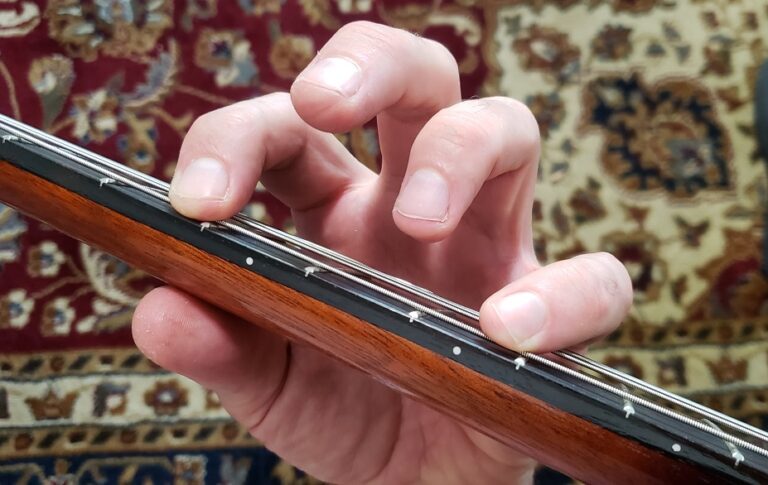Why You Have a Buzzing Sound from Your Acoustic Guitar

Buzzing sound from your acoustic guitar? Fingernails scratching on a chalkboard produce a more pleasant sound, don’t they? Here are five reasons possibly causing the buzz and how to fix them.
Uneven Fret(s)
One of the most common reasons for a buzz is one or more frets at an uneven height. The space difference created between the string and fret leads to the buzz. Diagnosing an uneven fret is quite simple. Get a fret rocker, hold over three frets and look for a ‘rock.’ However, fixing an uneven fret is another story, and you’ll want to take your guitar into a guitar tech, who may be able to fix the one problem fret, but more likely might need to do a full fret level.
Action Too Low
Guitarists, especially beginning guitarists, often request that their action be set as low as possible without buzzing. Although this might result in easier playing, a small humidity change can result in the neck relief shifting and a resulting buzz. Low action is also a tone killer, producing weak hammers and bends. Have your guitar set up at an appropriate level by a guitar technician who takes into account your playing style, including the intensity of your picking hand attack. Then look for other ways to improve playability, such as smoothing the nut slots.
Neck Relief Shift
Your guitar’s neck will have a subtle relief so that the strings, which vibrate in an elliptical pattern like a jump rope does, aren’t hitting the fretboard in the center. Changes in humidity can result in neck relief changes and a buzz, and you may need to add a touch of relief. You can do this on your own. Check out Tony Polecastro’s How to Adjust the Truss Rod on Your Acoustic Guitar video
The Gas Pedal
Are you stomping down on the gas pedal, aka, picking too hard? You may need to ease off just a touch. If you pluck a string hard enough, then you’ll get a buzz, and some strings/frets will be more pronounced. You might also want to look into getting a thinner pick, or consider a pick or finger picks made of a different material.
Saddle Grooves
Over time, your strings will slowly cut grooves in the saddle. If one of the grooves gets too deep, the action for that particular string will be too low and result in a buzz. You’ll need to replace the saddle, which you can do by yourself. Check out our video on how to replace a saddle for tips. When getting a new saddle, consider a bone saddle, which many guitarists prefer to plastic saddles. Check out our article Does a Bone Saddle Make a Difference? for more information.
